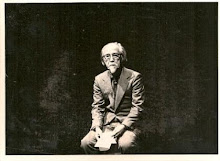 Keishi Ohtomo’s Rurouni Kenshin opens like many historical pictures, in pitch darkness with the year and conflict telegraphed to us through white on black intertitles. It is 1868, the closing moments of the Boshin War, a turning point in Japan’s history as the country took its first steps to Empiredom. Our hero, Battosai the Manslayer (Takeru Satoh), is an assassin for the Imperialists but he doesn’t share in their happiness as his side defeats the remnants of the Tokugawa Shogunate. Instead, with the war won, he abandons his sword on the battlefield and seemingly relinquishes his license to kill.
Keishi Ohtomo’s Rurouni Kenshin opens like many historical pictures, in pitch darkness with the year and conflict telegraphed to us through white on black intertitles. It is 1868, the closing moments of the Boshin War, a turning point in Japan’s history as the country took its first steps to Empiredom. Our hero, Battosai the Manslayer (Takeru Satoh), is an assassin for the Imperialists but he doesn’t share in their happiness as his side defeats the remnants of the Tokugawa Shogunate. Instead, with the war won, he abandons his sword on the battlefield and seemingly relinquishes his license to kill.
Ten years quickly pass in the blink of a well placed dissolve and Battosai the Manslayer has changed his name to Himura Kenshin, the sword with a heart. Japan is in the throes of the Meiji period, earth-tone kimonos being replaced with powder white naval uniforms, and our reluctant hero has joined the ever-growing mass of wandering directionless samurai. Though having vowed 10 years ago to never take another life a series of murders that were done under his old name push the former manslayer to uncover the culprits. Along the way he befriends a series of quirky allies and fights an army of theatrically dressed villains.

If this plot sounds rote and almost cartoonish then it most likely will not surprise you to learn that Rurouni Kenshin began it’s life as a popular manga, written by Nobuhiro Watsuki, then translated onto television as a 95-episode anime before finally transplanted onto the big screen. Straddling the tropes of the jidai-geki/chambara and the superhero genre, sadly Ohtomo’s picture leans far more heavily towards the strained seriousness of commercial blockbuster cinema.
Lacking the bleak atmosphere and complicated anti-heroes that were synonymous with chambara auteurs like Kenji Misumi or Hideo Gosha, Rurouni Kenshin only reminds fans just how far the genre has fallen. Whereas previous films of the sort never shied away from exposing the violence and brutality possible in all men, be they samurai or otherwise, what we get in Rurouni Kenshin are bloodless and antiseptic duels. Blood may stain the carefully art directed sets and scenery but we never completely believe that the actors katanas make contact with one another. No longer is there the excitement that comes from watching two morally compromised characters dueling to the death. Instead, sound effects of clashing swords and carefully edited cuts are what we are left with for excitement. And replacing moral ambiguity, there is a comic book simplicity to the plot. The bad guys, for the most part, all wear black and on the side of good are the good-looking ones who have only the best intentions at heart.

Takeru Sato, famous for his recurring role as the superhero Kamen Rider, does a decent enough job playing the reformed manslayer Kenshin. His soft somewhat androgynous features make it easy for the viewer and the cast of characters in the film to let down their guard when he appears. When blades are crossed though, it is quite a chore to believe that Sato is a menacing threat for anyone who dares cross his path. Sato plays Kenshin as too much of a blank slate. His dreamy-eyed stare may make a few girls swoon, but he’s no match for a Tatsuya Nakadai, Tomisaburo Wakayama, or Raizo Ichikawa, all of whom made their mark in chambara cinema playing wounded masculine characters.
The only actor that stood out from the relatively humdrum cast is Teruyuki Kagawa, an actor that ironically made his bones in the Japanese film industry playing subtle oftentimes repressed characters. In Rurouni Kenshin though he hams it up as Kanryu Takeda, a Snidely Whiplash-esque archenemy that has far more in common with mid-Twentieth century Bond villains than he does Meiji era business tycoons. And, taking a cue from Tony Montana, Takeda makes basking in his own self-important glory a true art.

As underlings, Takeda has a posse of pseudo-supernatural thugs dressed in middle-eastern garb. However, their role as henchmen is relegated to being punching bags for the good guys. The only character under Takeda’s employ that had a shade of depth was Megumi (Yu Aoi), who vacillates between femme fatale, tragic heroine, and girl-next-door. The entire story pivots around the relationship between Megumi and Takeda, making their love-hate co-dependent relationship far more interesting than the white bread prim and proper romance between Kenshin and Kaoru (Emi Takei) that the film trots out as its sorry excuse for a subplot.
Those with a deep love and affection for exciting chambara pictures or introspective and artistically minded jidai-geki films will find a lot wanting with Rurouni Kenshin. Ohtomo’s movie caters more to the J-Pop/animation crowd, and though I find nothing wrong with either art forms after seeing Rurouni Kenshin you might want to cleanse your cinematic palette with something far more “substantial”.
(Originally published on April 9, 2013 at VCinema Show Podcast and Blog.)




No comments:
Post a Comment